What is a push notification? And why should you even use it?
As push notifications become popular and I blog about it here on OmniKick, I’ve been receiving questions from readers who want to learn how they can use the push technology.
If you have a smartphone, then you probably receive push notifications every day. They are the notifications you get from mobile apps like WhatsApp, Gmail, and Skype.
However, push notifications aren’t limited to smartphones. You can receive push notifications in your web browsers on PC. Android also allows you to receive push notifications in your browsers.
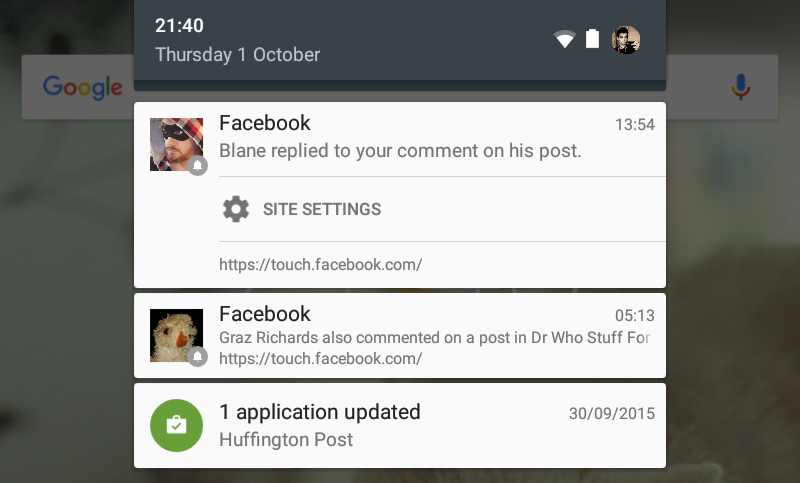
So, if you subscribe to receive push notifications from a website in the Chrome browser on desktop, you’ll get those notifications from Chrome in Android.
Before you can receive your desktop’s Chrome push notifications on mobile, you’ll have to log in to sync your Chrome across your devices.
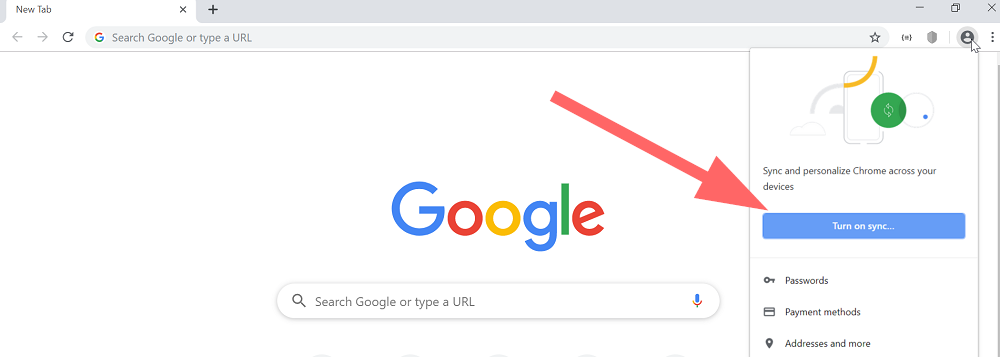
The push technology lets you stay in touch with your prospects, no matter where they are online.
Whether your prospects are on Twitter app on their smartphone, or they are browsing some random websites on their PC/Mac, you can reach them.
It’s easy to abuse the push technology because anyone can use it. Some marketers go overboard by constantly sending too many push notifications to their subscribers.
Push subscribers will unsubscribe or simply mute your notifications when you use it to disrupt their day. But if you use the technology well to educate, entertain, and keep your audience engaged, you’ll be highly rewarded.
The Push Technology Is Different From SMS
One of the questions beginner marketers ask me is how the push technology different from SMS.
Yes, push notifications and text messages share some similarities, but they are not the same.
In smartphones, messages from both the push technology and SMS appear on the home and lock screen, but they are still different.
First, a smartphone user can read a long text message on their lock screen. Users can’t read an entire push notification on their lock screen.
With push notifications, you need to have a short character limit if you want subscribers to see your message on their lock screen. For example, the below push notification is short than the text message from Amazon.
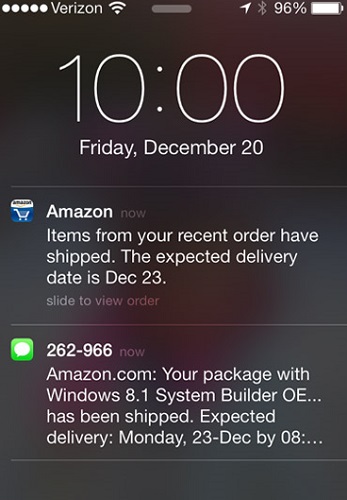
If your push notifications are too long and the subscriber receives a lot of notifications, the likelihood of getting them to convert is low.
Yes, you may argue that this makes text messages better than push notifications, but that would be untrue. Very few people are willing to give marketers their phone numbers.
Instead of asking for a prospect’s phone number, request that they subscribe to receive push notifications in their browsers or smartphones. They would be more receptive.
Another difference is that push notifications are free. Depending on a prospect’s plan and usage, they may have to pay each time they receive a text.
While it’s true that digital marketers are starting to abuse push notifications, it’s much worse with text messages. Both online and offline businesses send text messages. And some random people bombard people’s phone with unsolicited messages.
People see these types of text messages as spam. You don’t want your business to be associated with spam.
Subscribers Can Opt-out of Push Notifications Whenever They Want
Web users like to have the freedom to choose what they want to see and not see. The push technology gives them this freedom.
Your subscribers can opt-out anytime they want without the need to ask for help from anyone. They’re in complete control.
The same thing can’t be said of text messages (and sometimes, email). If a user is receiving unwanted messages, there isn’t much he/she can do about it.
Email works the same way. Sometimes, blocking someone from sending you a message isn’t enough. They can send messages using another email address.
The situation is completely different with push notifications. You need the user’s permission before you can send messages to their smartphones or browsers. And they can revoke your access to send them notifications if they are not happy with your messages.
It’s the reason why web users love push notifications.
Generally, push notifications have high open rates as long as you’re doing it right. Send the right number of messages. Send messages your subscribers want to read. Entertain, educate, and surprise your subscribers with great content.
Sending too many notifications will make people block you. And sending irrelevant messages won’t make your subscribers happy.
The key is to achieving success with push notification is to provide immense value with your messages.
Over half of app users say that push notifications are annoying.
But 26% of smartphone users say they enjoy getting notifications about their interests. And an additional 20% of users say that push notifications boost their productivity.
As with all marketing channels, it’s impossible to keep everyone happy.
But imagine that you can keep only 20% of your push subscribers interested in your company, that would boost your revenue.
These are the top industries that are benefiting a lot from the push technology:
- Ride Sharing
- Food & Beverage
- Financial Services
- Betting
- Sports
- Online Services
- eCommerce
- Travel
- News & Media
- Social
If you’re in any of these industries, you should ensure that you’re taking advantage of the push technology. Lots of consumers in these industries are subscribing to their favorite sites.
A restaurant business can use push notification to notify its customers about discounts and promotions. And of course, there’s nothing bad in sending pictures of delicious food to loyal patrons.
You can build a huge audience with this technology as long as you don’t send too many notifications, and the messages you send are relevant to your subscribers’ interests and needs.
You Can Use Push Notifications to Target Customers Based on Their Location
Sending push notifications based on customers’ locations is one of my favorite digital marketing strategies. But to be able to do that, you’ll need to create a mobile application.
Of course, you shouldn’t build an app solely because of this reason. The app must really help your business beyond the purpose of sending push notifications.
You can collect location data from iOS and Android devices. But your customer must give you permission before you can track their location.
Big businesses like Starbucks and McDonald’s send location-based push notifications to drive sales.
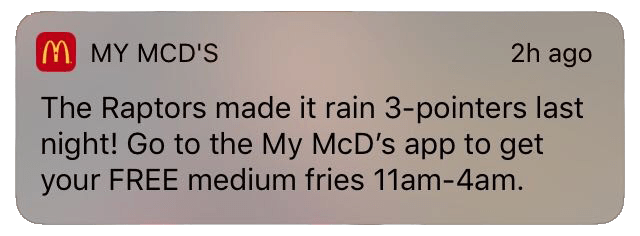
Timely push notifications like the above increase sales.
For example, let’s say a user lives in California, and they’re walking by Oakland Arena, the home of the Golden State Warriors. You can send a push notification offering discounts or free shipping after or before a basketball game in the Arena. The message should be about the game because the person is clearly interested in basketball.
The message would be relevant and timely.
Sending the same message to someone who lives in New York or elsewhere won’t be effective. The person doesn’t live in Oakland, and they are probably not a basketball fan.
Again, you’ll need to have a mobile app for iOS and Android to take advantage of this kind of location tracking feature for push notifications.
Use Push Notifications to Improve Your User Experience
Push notifications are more than just another marketing channel. Smart businesses use it to enhance the user experience of their business.
Think about why someone is visiting your website. How can you use push notifications to make their experience on your website even better?
If you run a blog, send push notifications each time you publish new content. Loyal readers wouldn’t want to miss it.
For example, a fashion store can send push notifications when they have new products. The store can also use push notifications to promote discounts and free shipping offers.
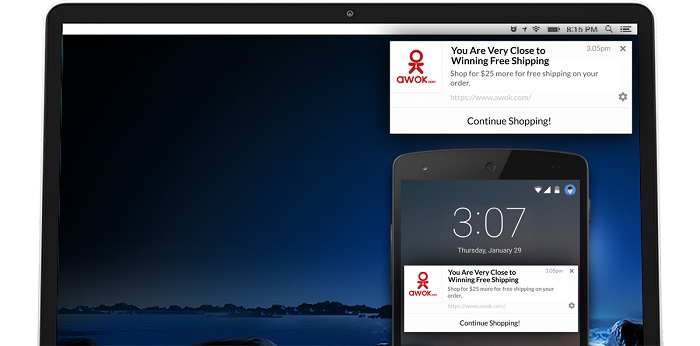
A company like Uber heavily relies on push notifications. Uber sends a push notification when your driver is arriving. So, you don’t have to stand and wait outside.
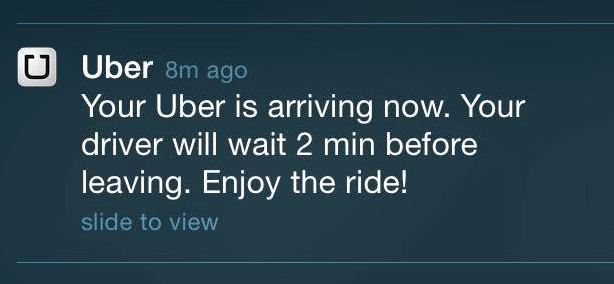
Food delivery apps send push notifications too. They send you one when your meal is arriving.
Think of a way you can use push notification to make your audience or customers happy.
Use Push Notification to Acquire More Customers
There’s no limit to what you can do with push notifications. You can use it to direct prospects to your social media channels, promote your products and services, build trust, and restore abandoned carts.
As long as you focus on delivering value first, subscribers will read your push notifications.
How do you provide value?
Create high-quality content on a consistent basis. Give your audience what they want. When you do that, they won’t miss your push notifications.
Look at the popular content creators in your industry. What are their readers liking, sharing, and commenting on? That’s the kind of content you should publish on your blog and social media channels.
Don’t create the same content. Do better.
If their posts explain the process, go beyond by creating tutorials. Brian Dean and the Ahrefs content team do this. They ensure that their content is the best.
So, when you send push notifications promoting your special offers, your audience will be interested.
If you’re looking for the perfect channel that enables you to increase your sales, choose push notification. Push notifications have higher open and click rates than email marketing.
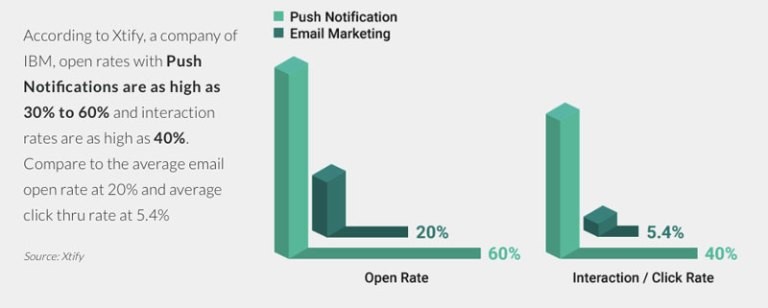
Most people don’t get notifications when they receive a new email. That’s different with push notifications. You see it in your web browser and mobile phone home page.
As long as each notification you send adds value and is timely, customers will continue to receive your push notifications.
If you run an online store, I highly recommend that you only send push notifications when you’re offering discounts for your products. That will make customers keep coming back to your store.
The Push Technology Makes It Easy to Personalize Your Messages
Personalization matters a lot when selling online. The great thing is that it’s easy to personalize the messages you send when using the push technology.
Above, I gave you the example of sending location-based push notifications. There’re other ways you can also personalize your push messages.
If you have a mobile app, you can see the customer’s purchase history and send them a valuable message that gets them to buy more from you.
Let’s say a customer bought tea kettles, pots, and pans over the past few months. Sending them a push notification of discounted cookware sets would be based on their shopping history.
You can send a push notification to a customer who abandoned their shopping cart before they could complete the purchase. Note that the customer must be a push subscriber before you can send them a notification.

Here’s another example:
Let’s say you own a local restaurant that serves real Italian cuisine and accepts orders on your website or mobile app.
If a customer ordered pasta the last four times, you might send them a push notification that gives them a 20% discount on their favorite pasta. That’s a personalized a push notification.
Customers love push notifications that are personalized.
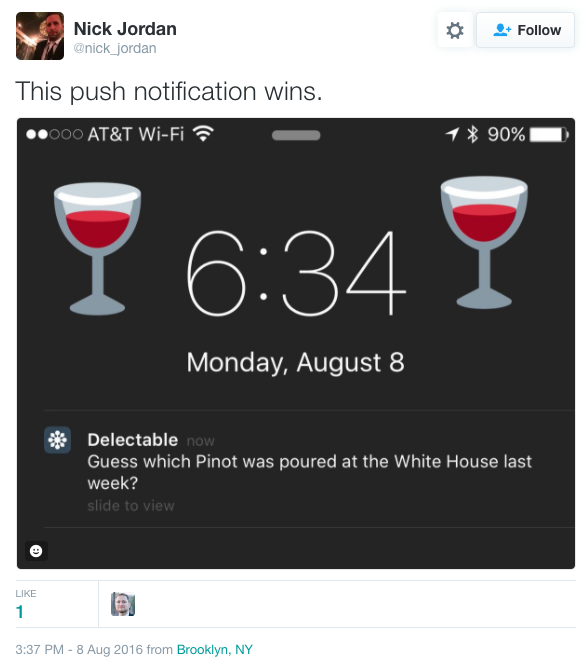
Conclusion
Based on everything you’ve read in this article, I’m sure you know what a push notification is and how it works.
I’m a big fan of push notifications. It’s better to use them than texts. And they also have higher open and click rates than email marketing. Just ensure that you don’t send them too often.s
OmniKick is a powerful growth tool you can use to build push notifications. You can use our push technology to send web push notifications to both desktop and mobile devices.
It’s easy to set up and send push notifications with OmniKick. It won’t take you more than 2 – 3 minutes. We’ve created guides that would educate if you’re just getting started for the first time.
Businesses that use our push technology are increasing their sales. You should start taking advantage of this amazing technology before your competitors steal your customers with it.
It’s completely free to get started with OmniKick today.
What are your thoughts about the push technology? Drop them using the comment box you’ll find below.
Thanks for reading, and please share this article with your friends on social media.
